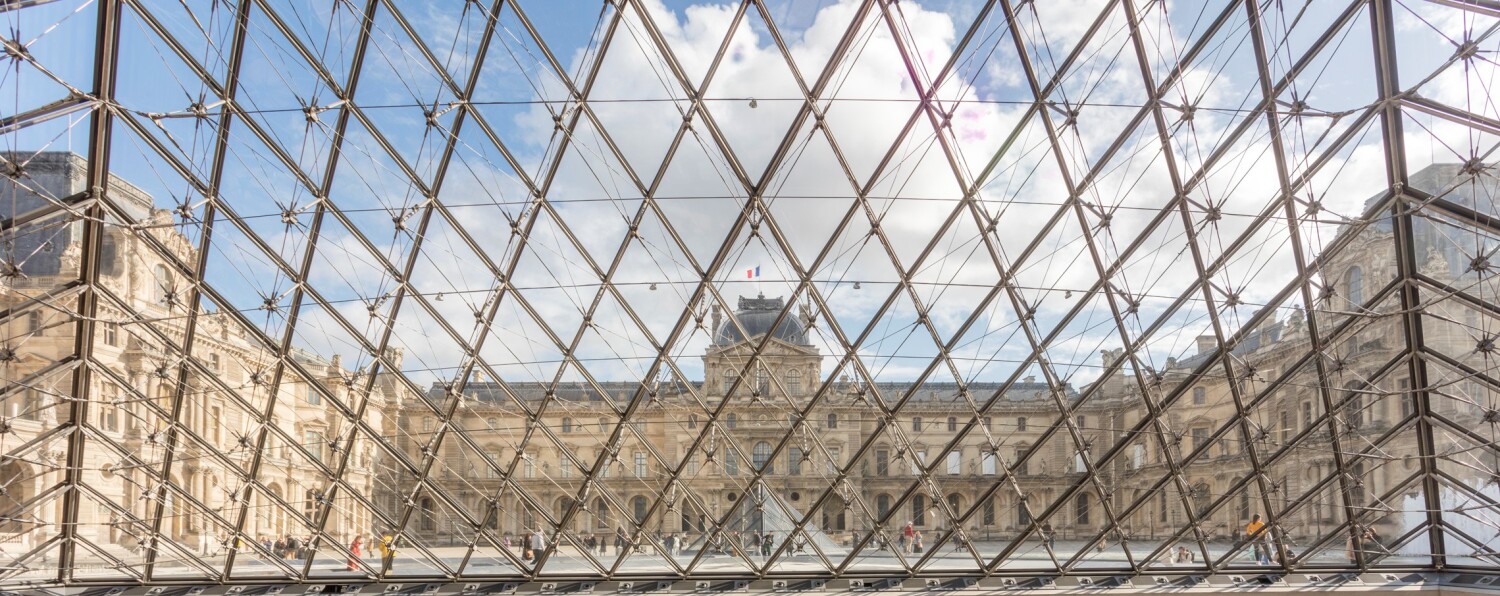Reminder : In 2023, the Louvre undertook the renovation of its temporary exhibition spaces.
The Hall Napoléon, created in 1989 as part of the Grand Louvre project, will benefit substantially from this renovation. In order to improve its layout and upgrade its technical equipment (flooring, walls, air conditioning, access), it will be closed for a year and a half, until autumn 2024.
NEAR EASTERN ANTIQUITIES IN DIALOGUE. THE MET AT THE LOUVRE
29 February 2024 – 28 September 2025
Richelieu and Sully Wings, Level 0, Rooms 227, 228, 232, 235, 302, 205 and 310
Exhibition curators: Ariane Thomas, Director of the Department of Near Eastern Antiquities and Vincent Blanchard, Chief Curator in the Department of Near Eastern Antiquities, Musée du Louvre.
The Louvre’s Department of Near Eastern Antiquities is hosting ten major works from New York’s Metropolitan Museum of Art, whose Department of Ancient Near Eastern Art is currently closed for renovation.
The Louvre and the Met have created a unique dialogue between these two collections, which will be displayed in the Louvre’s permanent galleries.
These ‘special guest’ artworks from the Met, dating from between the late 4th millennium BC and the 5th century AD, show some remarkable connections with the Louvre’s collection. In some cases, a pair of objects will be reunited for the first time, while in others, pieces will complement each other by virtue of specific historical features of their respective collections.
Representing Central Asia, Syria, Iran or Mesopotamia, this dialogue between collections and works of art will (re)introduce visitors to these extraordinary, age-old artefacts and the stories they tell.
A NEW LOOK ON VAN EYCK. MADONNA OF CHANCELLOR ROLIN
20 March –17 June 2024
Sully Wing, Level 1, salle de la Chapelle
Exhibition curator: Sophie Caron, Curator in the Department of Paintings, Musée du Louvre
The Louvre has decided to dedicate the first spotlight exhibition to be held in the Salle de la Chapelle since 2014 to Jan van Eyck’s masterpiece, the Madonna of Chancellor Rolin. This exhibition is intended as a public celebration of the impressive conservation work carried out on the painting at the Centre for Research and Restoration of the Museums of France – the first intervention of its kind since the painting entered the museum in 1800.
The conservators removed the layers of oxidised varnish that had darkened the painting, restoring the work to its former glory. Many aspects of this painting – less well known than it should be for such a major work of Western art – are difficult to understand, so the exhibition will be built around a series of questions designed to draw the viewer in: why did Van Eyck create this unusual work for Nicolas Rolin? Why is the background landscape so miniaturised as to be almost invisible? How should we interpret the two small figures in the garden? What are the connections between this painting, the art of illumination and funerary bas-reliefs? Do we know how the artists of the 15thcentury interpreted the scene?
The Rolin Madonna illustrates the tensions between medieval tradition and revolutionary experimentation that pervaded Flemish art in the first third of the 15th century. Yet, exhibiting Van Eyck’s work alongside that of his contemporaries allows us to make some telling comparisons which help pinpoint his work’s originality as much as its belonging to a particular era, and enhance our understanding of the exchanges between Van Eyck and other artists of his day.
OLYMPISM: MODERN INVENTION, ANCIENT LEGACY
24 April - 16 September 2024
Richelieu wing, Level -1, Galerie Richelieu
Exhibition curators: Violaine Jeammet, Senior Curator in the Department of Greek, Etruscan and Roman Antiquities, Musée du Louvre; Alexandre Farnoux (Honorary Director of the French School of Athens), Professor at Sorbonne Université; Christina Mitsopoulou, Archaeologist at the University of Thessaly, French School of Athens.
One of the cultural events designed to accompany the 2024 Olympic and Paralympic Games in Paris is an exhibition at the Louvre where visitors will discover how the first modern Olympic Games came into being, in what political context, and how the organisers set out to reinvent the sporting competitions of ancient Greece.
The origins of the modern Olympics are not widely known. In addition to Pierre de Coubertin, the ‘father’ of the modern Games, there were a handful of participants of Franco-Greek origin, including a number of academics and a Swiss artist and archaeological draughtsman living in Greece: Emile Gilliéron père (1850–1924), whose studio collection is currently being studied. Emile Gilliéron worked at the major archaeological excavation sites in Greece. He was appointed official artist for the Olympic Games of 1896 and 1906, and drew inspiration from recent discoveries at those sites to design the winners’ trophies and illustrate communication materials (especially stamps and posters) for the new Greek state, using the latest reproduction techniques. Thanks to an exceptional loan from the Stavros Niarchos Foundation (SNF), the Louvre will exhibit the first Olympic Cup, designed by a French academic and created by a French silversmith for the winner of the marathon – a race invented for the 1896 Games in Athens.
For the 2024 Olympics, the third to be held in Paris, the exhibition is intended to show how, in the name of sport, the disciplines of philology, history, art history and archaeology came together to create the world’s greatest and most-watched sporting event.
The program of the second half of the year can be found out in the downloadable press release below.

